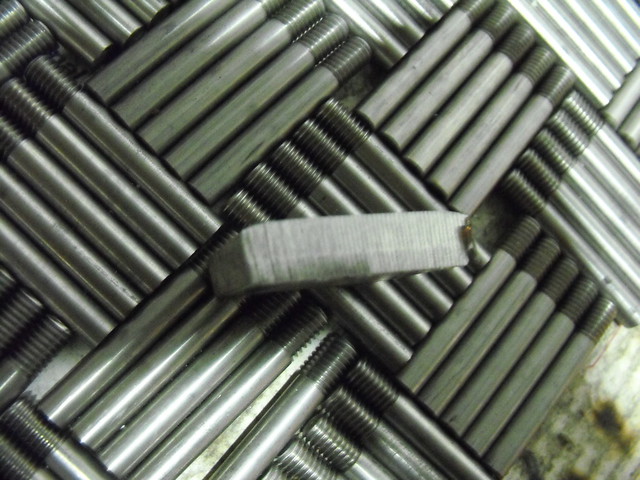SDConcepts
Stainless
- Joined
- Mar 1, 2007
- Location
- warren, mi
I've got a customer that wants me to make some tees. the parts are 3/4 x 7/8 x 1/2 304 ss. here's what I've come up with...
1. automatic band saw saw 10000 blanks mount parts in a mill to square up saw cut, then put them on a fixture in a 4th axis to machine 3 additional sides. (holding for this may become a problem)
2. laser or water jet the blanks, put in 4th axis etc
3. don't know if I can afford this but buy a mill turn and have it spit out done parts one at a time machined off the bar automatically.
did I miss anything?
for the 4th axis fixture I'm thinking it would be about 16 inches long and could hold parts on 4 sides. may have to make 2 of these so that I can swap fixtures and load/unload off the machine. whats the best way to hold the parts down? I though about mittee bites that may grab them well enough.
the other option is to start from 3/4 x 1 stock and then mill a space between them I'd lose a lot of material this way, but it may be the most economical to save setup costs.
1. automatic band saw saw 10000 blanks mount parts in a mill to square up saw cut, then put them on a fixture in a 4th axis to machine 3 additional sides. (holding for this may become a problem)
2. laser or water jet the blanks, put in 4th axis etc
3. don't know if I can afford this but buy a mill turn and have it spit out done parts one at a time machined off the bar automatically.
did I miss anything?
for the 4th axis fixture I'm thinking it would be about 16 inches long and could hold parts on 4 sides. may have to make 2 of these so that I can swap fixtures and load/unload off the machine. whats the best way to hold the parts down? I though about mittee bites that may grab them well enough.
the other option is to start from 3/4 x 1 stock and then mill a space between them I'd lose a lot of material this way, but it may be the most economical to save setup costs.


 .
.

 ) and the Uniforce clamp in place. Remember, these run on tombstone attached to a Koma 4th for rotations. I like it as every cycle we run (unattended) yields 28 parts. If this were a big runner, I'd probably still do it the same way, fixturing both tombstones on all fours sides and filling them up in X, so we would probably be closer to 72 parts per cycle, and about 3 minutes to swap a t'stone.
) and the Uniforce clamp in place. Remember, these run on tombstone attached to a Koma 4th for rotations. I like it as every cycle we run (unattended) yields 28 parts. If this were a big runner, I'd probably still do it the same way, fixturing both tombstones on all fours sides and filling them up in X, so we would probably be closer to 72 parts per cycle, and about 3 minutes to swap a t'stone.
